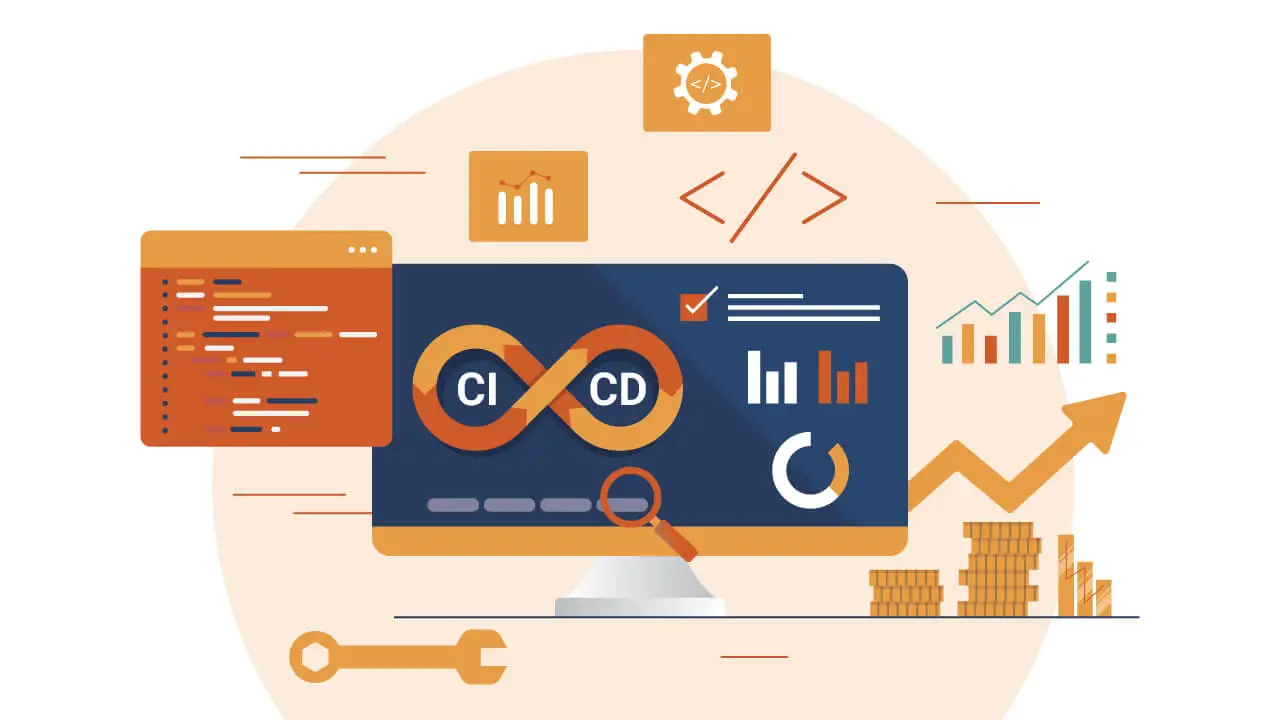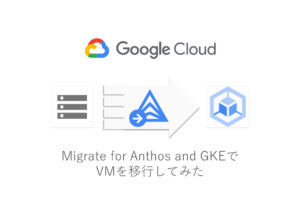Article At-A-Glance
- A mid-sized software company reduced deployment time by 87% and saved over 150 hours monthly through CI/CD automation
- Manual deployments were causing significant quality issues with a 23% error rate before implementing automated pipelines
- Developer satisfaction increased from 42% to 91% after CI/CD implementation, dramatically reducing turnover
- The company achieved ROI within 4 months of implementation despite initial investment costs
- Strategic implementation focused on incremental adoption rather than an overnight transformation
Imagine cutting your deployment time from hours to minutes while simultaneously improving code quality and developer happiness. This isn’t a DevOps fairy tale—it’s the real-world result experienced by our Fintech client (I’ll refer to them as FinTech for the rest of this article), a mid-sized financial software provider whom we helped transform their development process through CI/CD automation. Their journey from deployment chaos to streamlined efficiency offers valuable lessons for organizations still wrestling with manual processes.

“CI/CD Pipeline Automation Testing: A …” from www.headspin.io and used with no modifications.
The Real Cost of Manual Deployments: One Company’s Breaking Point
Prior to implementing CI/CD automation, our Fintech client was hemorrhaging time, quality, and talent. Their development team of 32 engineers was producing solid code, but the deployment process had become a bottleneck that threatened the entire business. As customer demands increased and competitors moved faster, the limitations of their manual processes became painfully apparent.
Daily Deployment Headaches: 20+ Hours Weekly Lost to Manual Processes
The company’s deployment process was a masterclass in inefficiency. Each release required a 27-step checklist performed manually by senior developers. The process typically consumed 4-6 hours per deployment, with teams deploying to production once weekly. More alarming was the hidden cost: three senior developers spending an additional 20+ hours weekly troubleshooting failed deployments and addressing configuration inconsistencies between environments.
The deployment ritual had become so cumbersome that the team dreaded release days. “Thursday deployments meant Friday fixes,” explained Sarah, FinTech’s CTO. “Nobody wanted to be on call during weekends, but deployment issues regularly spilled over, creating a perpetual cycle of stress.”
Quality Issues: High Error Rates from Human Intervention
The manual deployment process wasn’t just slow—it was error-prone. Data collected over six months revealed a sobering 23% error rate in production deployments. Each error meant emergency fixes, customer dissatisfaction, and sometimes direct revenue impact as financial transactions were affected.
Configuration drift between environments was the primary culprit. Despite detailed documentation, subtle differences between development, staging, and production environments created unpredictable outcomes. The QA team found themselves spending more time investigating environment-related issues than actual software bugs.
Developer Burnout: Rising Frustration and Team Turnover
Perhaps most costly was the human toll. Developer satisfaction surveys showed a steady decline, dropping to 42% by mid-2024. Exit interviews revealed a common theme: talented engineers were leaving because they spent more time on deployment tasks than on creative development work. The company lost seven developers in eight months—a 22% turnover rate that created knowledge gaps and further slowed progress.
“We were caught in a vicious cycle,” notes Sarah. “Our best engineers were leaving because they spent their time fighting deployment fires instead of building new features. This made the remaining team even more stretched, worsening the problem.”
Implementing CI/CD: The Transformation Journey
The breaking point came when a critical deployment failed during month-end processing, causing a four-hour outage that impacted thousands of customers’ financial transactions. The incident prompted a complete rethinking of their approach to software delivery. After calculating that manual processes were costing approximately $42,000 monthly in direct engineering time—not counting opportunity costs—the executive team approved a CI/CD transformation initiative. They brought in SlickFinch to consult and guide them through this process, as they did not have any senior DevOps engineers and did not want to go through a lengthy and expensive recruitment process.
Tool Selection: Finding the Right Automation Ecosystem
The team had already begun evaluating CI/CD tools based on their specific requirements. They compared Jenkins, GitLab CI, CircleCI, and GitHub Actions, but we recommended they select GitLab for its integrated approach to source control and CI/CD pipelines. The decision was influenced by their existing Git workflow and the desire for a unified platform rather than multiple point solutions.
For containerization, we had them adopt Docker with Kubernetes for orchestration, allowing them to package applications with their dependencies and ensure consistency across environments. Infrastructure-as-Code was implemented using OpenTofu, enabling them to version-control their infrastructure alongside application code.
Step-by-Step Migration Plan
Rather than attempting a “big bang” implementation, FinTech adopted a phased approach to minimize disruption. The migration began with a pilot project: a non-critical internal tool used by the customer support team. This allowed the engineering team to learn the new tools and processes without risking customer-facing applications. The initial pipeline took three weeks to build, test, and refine—longer than expected, but the learning proved invaluable for subsequent phases.
Following the successful pilot, the team created a six-month roadmap to migrate all systems to the new CI/CD pipeline. They prioritized applications based on deployment frequency, complexity, and business impact. “We started with our highest-pain, highest-value services,” explains DevOps lead Miguel Sanchez. “This created immediate relief for the team and built momentum for the broader transformation.”
Overcoming Resistance to Change
Not everyone embraced the shift to automated pipelines. Several senior developers who had “mastered” the manual deployment process initially viewed automation as a threat to their status. Others expressed skepticism about whether automation could handle edge cases that required human judgment. The leadership team together with SlickFinch’s consultants addressed these concerns through transparency and involvement.
“We made sure our most experienced developers were part of designing the automation, not just consuming it,” says Sarah. “They became our internal champions when they saw how much more time they had for interesting work.” The team also implemented a policy where anyone who identified a legitimate edge case they thought automation couldn’t handle would lead the solution development, giving skeptics ownership in the new system.
Training and Adoption Strategy
Knowledge transfer proved crucial to successful adoption. The company implemented a multi-faceted training approach including formal workshops led by SlickFinch, pair programming sessions, and a “CI/CD buddy system” where early adopters mentored colleagues. Documentation became a first-class deliverable, with comprehensive guides and video tutorials created for each component of the pipeline.
A CI/CD excellence team was formed to support developers during the transition. This cross-functional group provided on-demand assistance, reviewed pipeline configurations, and collected feedback to drive continuous improvement. Over time, the team’s role evolved from support to innovation as adoption matured.
The Automation Breakthrough: Key Components That Drove Success
FinTech’s CI/CD implementation included several critical components that worked together to eliminate manual touchpoints. The integrated approach addressed not just build and deployment automation, but the entire software delivery lifecycle from code commit to production monitoring.
Automated Testing Pipeline: Catching Bugs Before Deployment
We showed them how to implement a multi-layer testing strategy that automatically executed unit, integration, and end-to-end tests with each code commit. These tests ran in parallel, providing fast feedback to developers without waiting for the entire test suite to complete. Test coverage metrics became a gateway requirement for code merges, gradually increasing the minimum threshold as the team developed more tests.
Performance and security tests were integrated into the pipeline for critical services, detecting potential issues before they reached production. “Our security team went from being a bottleneck that reviewed code after it was written to providing tools that automatically checked for vulnerabilities during development,” notes Security Officer Priya Sharma. This shift-left approach reduced security-related rework by 64%.
Containerization: Ensuring Consistency Across Environments
Docker containers became the foundation for deployment consistency, packaging applications with their dependencies to eliminate the “works on my machine” problem. This containerization strategy ensured that code behaved identically across development, testing, staging, and production environments. Each developer could run a complete environment locally that precisely matched production, dramatically reducing environment-related issues.
The company standardized on base container images maintained by the platform team, with security patches and updates automatically propagated to all derived images. This approach reduced vulnerability exposure while maintaining consistency across the application portfolio.
Infrastructure as Code: Eliminating Configuration Drift
One of the most transformative changes was adopting OpenTofu to define all infrastructure as code. Every environment—from development through production—was specified in version-controlled configuration files. This eliminated the configuration drift that had previously caused so many deployment failures.
“Before IaC, we had a 40-page runbook for provisioning a new environment,” recalls Systems Engineer Taylor Washington. “Now we have a single command that creates identical environments in minutes, with zero manual steps.” The approach also enabled ephemeral environments created on-demand for testing features, then destroyed when no longer needed—improving resource utilization and reducing costs.
Monitoring and Feedback Loops
Visibility became a cornerstone of FinTech’s new approach to deployments. The team implemented comprehensive monitoring using Prometheus and Grafana dashboards that tracked everything from application performance to pipeline metrics. Every deployment automatically updated dashboards showing service health, enabling instant verification of deployment success.
Real-time alerting was configured to notify teams of anomalies before users reported issues. “We moved from a reactive stance where we’d learn about problems from angry customers to a proactive one where we often fixed issues before anyone noticed,” explains Operations Lead Jamie Rodriguez. This monitoring infrastructure reduced mean time to detection by 76% and mean time to resolution by 64%.
The team also implemented feature flags, allowing them to deploy code to production but activate it selectively. This approach enabled them to test features with limited user groups before full rollout, further reducing risk.
Release Automation: From Commit to Production
The culmination of FinTech’s transformation was a fully automated release pipeline that could take code from commit to production with minimal human intervention. The process began with automatic builds triggered by code commits, followed by progressive deployments through environments. At each stage, automated verification checks confirmed successful deployment before proceeding to the next environment.
For production deployments, we recommended that they team implement blue-green deployment patterns that maintained two identical production environments. New releases were deployed to the inactive environment, tested thoroughly, and then traffic was switched over—a process that took minutes instead of hours and could be rolled back instantly if issues arose.
“Our deployment process went from being our greatest weakness to a competitive advantage. What used to take a full day of engineering time now happens automatically in under 15 minutes, with higher reliability than we ever achieved manually.” – Sarah C., CTO
Measurable Results: Beyond the 150+ Hours Saved
Six months after completing the CI/CD implementation across all systems, FinTech conducted a comprehensive assessment of the transformation’s impact. The results exceeded even their optimistic projections, demonstrating ROI across multiple dimensions.
Deployment Frequency: From Weekly to Multiple Times Daily
The most immediate impact was on deployment cadence. The team moved from weekly deployments to an average of 8-12 deployments daily across their services. This dramatic increase allowed features to reach users faster and enabled a more iterative approach to development. Small changes could be released immediately rather than waiting for the next deployment window, reducing work-in-progress and improving flow.
More frequent deployments also meant smaller, less risky changes with each release. The average lines of code per deployment decreased by 93%, making each change easier to understand, test, and roll back if necessary. This shift from large, infrequent releases to continuous delivery fundamentally changed how the team approached development.
Error Reduction: 87% Fewer Production Issues
Perhaps the most impactful change was the dramatic reduction in production incidents. Deployment-related errors decreased by 87% in the first quarter after full implementation. This improvement stemmed from both the elimination of manual steps and the consistent testing across identical environments.
The few incidents that did occur were resolved faster due to improved observability and the ability to roll back instantly. Mean time to recovery decreased from 97 minutes to just 12 minutes, minimizing customer impact when issues arose. The combination of fewer incidents and faster recovery translated directly to improved service reliability and customer satisfaction.
Time to Market: Features Reaching Customers 4x Faster
With the deployment bottleneck removed, FinTech’s ability to deliver new capabilities accelerated dramatically. The average time from feature conception to production decreased from 24 days to just 6 days—a 75% reduction. This agility enabled the company to respond more quickly to market opportunities and customer feedback.
Product teams reported that the faster feedback cycle improved their decision-making. They could test hypotheses quickly, learn from real user data, and iterate based on that learning. This approach led to better-designed features that more closely matched user needs, improving product adoption metrics across the board. For more insights on improving product development processes, you might explore topics like Elastic Kubernetes Service which can enhance deployment efficiency.
Business Impact: $230,000 Annual Cost Savings
The financial impact of the CI/CD transformation exceeded expectations. Direct time savings from eliminated manual work totaled over 150 hours monthly, valued at approximately $18,750 in engineering costs. When combined with reduced downtime costs, faster incident resolution, and improved quality, the total annual savings reached $230,000.
Even more significant was the revenue impact of faster feature delivery. The company’s ability to implement new capabilities more quickly led to an estimated $1.2M in incremental annual revenue from improved competitive positioning and faster response to market opportunities.
Beyond the tangible financial results, the company experienced a remarkable turnaround in team morale and retention. Developer satisfaction scores increased from 42% to 91%, and turnover dropped to just 5% annually—well below industry averages. The improved work environment helped attract new talent, with candidates specifically citing the modern development practices as a reason for joining.
Lessons Learned: Making CI/CD Work for Your Business
FinTech’s journey offers valuable insights for organizations considering their own CI/CD transformation. While the technical implementation was crucial, the team identified several non-technical factors that proved equally important to their success.
Start Small and Scale Gradually
The incremental approach to implementation recommended by SlickFinch proved crucial to FinTech’s success. Starting with a pilot project allowed the team to learn and adjust their approach before tackling more critical systems. “If we had tried to transform everything at once, we would have failed,” admits Sarah. “The phased approach let us build competency and confidence with each step.”
The team recommends selecting an initial project with high visibility but moderate risk—something important enough to demonstrate value but not so critical that failure would be catastrophic. This balanced approach builds momentum while containing risk.
Get Expert Help From Pros Who Have Done It Before
The team realized from the start that their existing team were lacking the skills and experience to implement this project themselves. By bringing in SlickFinch, they got the benefit of our knowledge and experience and had the peace of mind that the decisions being made were the correct ones. We were also able to teach and upskill their existing DevOps team during the project so that they could become more self sufficient by the end of it.
“The advice and expertise provided by SlickFinch was crucial to our success. Their understanding of the core principles and mindset are what really mattered,” explains Sanchez. “We needed engineers who understood the ‘why’ behind CI/CD, not just the ‘how’ of specific tools.” This buy-in from the team created a sustainable transformation that continued to evolve long after the initial implementation.
Leadership Buy-in: Securing Executive Support
Executive sponsorship was also essential to the transformation’s success. The team secured this support by quantifying the current pain in business terms: lost developer productivity, delayed features, reliability issues, and talent attrition. They presented CI/CD not as a technical initiative but as a business imperative directly tied to company performance.
Regular updates to leadership highlighted both progress metrics and business outcomes, maintaining executive engagement throughout the journey. This sustained support enabled the team to overcome resistance and secure necessary resources at critical junctures.
“Our executives became our strongest advocates once they saw the business impact,” notes Sarah (CTO). “They started asking why we weren’t moving faster on adoption, which was a complete reversal from the initial skepticism we faced.”
Critical Success Factors for CI/CD Implementation
- Executive sponsorship with clear business case
- Incremental implementation starting with pilot projects
- Robust training and knowledge sharing program
- Cross-functional teams with shared ownership
- Focus on cultural change alongside technical implementation
Next Steps: Your CI/CD Implementation Roadmap
For organizations inspired by FinTech’s success, the path to CI/CD transformation begins with honest assessment and thoughtful planning. While each company’s journey will be unique, these proven steps provide a framework for getting started.
Assessment: Evaluating Your Current Pipeline Pain Points
Begin by documenting your current deployment process in detail, including all manual steps, handoffs, and approval gates. Calculate the time spent on deployments, including preparation, execution, verification, and troubleshooting. Survey your team to identify pain points and collect data on deployment-related incidents over the past 3-6 months. This baseline will help you prioritize improvements and measure success as you progress.
Planning: Creating Your Automation Strategy
Based on your assessment, develop a phased implementation plan that addresses your most significant pain points first. Identify quick wins that can demonstrate value while building toward more comprehensive automation. Consider starting with test automation or build processes before tackling deployment automation, as these often provide immediate benefits with lower risk.
Define clear success metrics tied to business outcomes, not just technical implementation. These might include deployment frequency, lead time for changes, change failure rate, and mean time to recovery—the four key metrics identified in the DORA research program as indicators of delivery performance.
Tools: Selecting the Right Solutions for Your Stack
Evaluate CI/CD tools based on your specific requirements and existing technology stack. Consider factors like integration capabilities, learning curve, community support, and scalability. Remember that no single tool will solve all problems; most successful implementations use a combination of specialized tools working together.
Consider managed services where appropriate, especially if your team lacks specialized DevOps expertise. Companies like SlickFinch offer managed CI/CD services that can accelerate implementation while reducing operational overhead. This approach can be particularly valuable for smaller teams or as a stepping stone to more customized solutions.
Measuring Success: KPIs That Matter
Establish a comprehensive measurement framework that tracks both process metrics (like deployment frequency and duration) and business outcomes (like feature delivery rate and customer satisfaction). Make these metrics visible to everyone involved in the process, and use them to drive continuous improvement. Regular retrospectives to review these metrics will help identify further optimization opportunities and ensure sustained progress toward your goals.
Frequently Asked Questions
As FinTech shared their transformation story with industry peers, several common questions emerged about CI/CD implementation. Their responses provide practical guidance for organizations at various stages of their automation journey.
How long does it typically take to implement a CI/CD pipeline?
FinTech’s experience shows that while initial pipeline setup can be completed in weeks, a comprehensive transformation typically takes 6-12 months for mid-sized organizations. The timeline depends on factors including application complexity, team experience, and existing infrastructure. Their recommendation is to focus on incremental progress rather than perfection, with each phase building on lessons from previous iterations.
What’s the average ROI companies see from CI/CD automation?
Return on investment varies widely depending on the starting point and implementation approach. FinTech achieved ROI within 4 months based on engineering time savings alone. When including reduced downtime, faster incident resolution, and increased feature velocity, the payback period was even shorter.
Industry research shows that high-performing organizations deploying with CI/CD automation can achieve 208 times more frequent deployments, 106 times faster lead time from commit to deploy, and 7 times lower change failure rate compared to low-performing teams relying on manual processes.
Most organizations find that improved developer productivity and reduced operational incidents provide the most immediate returns, while business benefits from increased agility typically appear within 6-12 months of implementation.
CI/CD Implementation ROI Calculation
Benefit Category
Calculation Approach
Typical Impact
Engineering Time Savings
(Hours spent on manual deployment × Engineer hourly cost) × Deployment frequency
30-50% reduction in deployment effort
Reduced Downtime
(Average incident duration × Cost per minute) × Incident frequency reduction
60-80% reduction in deployment-related incidents
Faster Time to Market
(Value per feature × Additional features delivered) + Early market entry advantage
40-60% reduction in feature delivery cycle
Improved Developer Retention
Reduced recruitment and onboarding costs from lower turnover
15-30% improvement in retention rates
To calculate your potential ROI, start by documenting current costs in these categories, then estimate the improvements achievable through automation based on industry benchmarks and your specific environment.
Do I need specialized DevOps engineers to maintain CI/CD systems?
While dedicated DevOps expertise is valuable, FinTech found that bringing in proven experts to guide and upskill existing team members was faster and more effective than trying to hire full-time specialists. They created a platform team with representatives from development, operations, and QA who received focused training on CI/CD tools and practices. This cross-functional approach ensured that automation aligned with actual development needs rather than becoming a separate silo.
For organizations just beginning their CI/CD journey, consider these approaches to building necessary expertise:
- Identify automation champions within your existing team who show interest and aptitude
- Invest in training for select team members who can then train others
- Partner with consultants for initial implementation and knowledge transfer
- Consider managed CI/CD services that reduce the need for specialized operations knowledge
- Implement gradually to allow team skills to develop alongside your automation maturity
Remember that CI/CD is as much about culture and process as it is about technology. Technical skills can be learned, but the mindset shift toward shared ownership of the delivery pipeline is often more challenging and requires leadership example.
As your CI/CD practice matures, you’ll likely find that responsibilities shift. Developers take more ownership of pipeline configuration, while operations focus on platform capabilities and governance. This evolution happens naturally as teams gain experience with the tools and concepts.
Which CI/CD tools work best for small to medium businesses?
FinTech recommends that smaller organizations consider cloud-based CI/CD services that minimize infrastructure management. Options like GitHub Actions, CircleCI, and GitLab CI provide powerful capabilities with minimal setup and maintenance overhead. These platforms offer pay-as-you-go pricing that scales with usage, making them accessible entry points for teams of any size.
Can legacy applications benefit from CI/CD automation?
Legacy applications can indeed benefit from CI/CD practices, though the approach may differ from greenfield projects. FinTech successfully brought several legacy systems into their CI/CD pipeline by first focusing on automated testing and build processes before tackling deployment automation. They found that even partial automation delivered significant benefits by reducing manual effort and improving reliability.
For monolithic applications that resist containerization, consider implementing deployment automation through configuration management tools like Ansible or Chef. These tools can automate many aspects of traditional deployments while you work on longer-term modernization strategies.
The key is to meet applications where they are rather than forcing them into patterns they weren’t designed for. Even automated testing and consistent build processes can deliver substantial improvements for legacy systems, setting the foundation for more comprehensive automation as the applications evolve, especially when using services like Elastic Kubernetes Service.
Remember that CI/CD is a journey, not a destination. Each step toward automation delivers incremental value while building capabilities for further improvement. As FinTech’s experience demonstrates, the cumulative impact of these improvements can transform not just your deployment process, but your entire approach to software development and delivery.
Ready to start your own CI/CD transformation? SlickFinch offers consulting services to help organizations implement effective CI/CD pipelines based on their experience with projects like Fintech’s.




